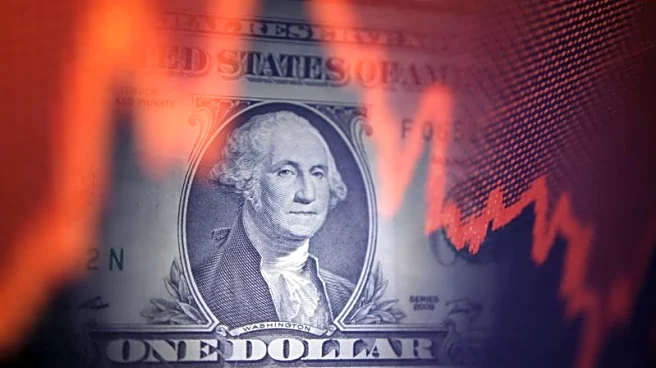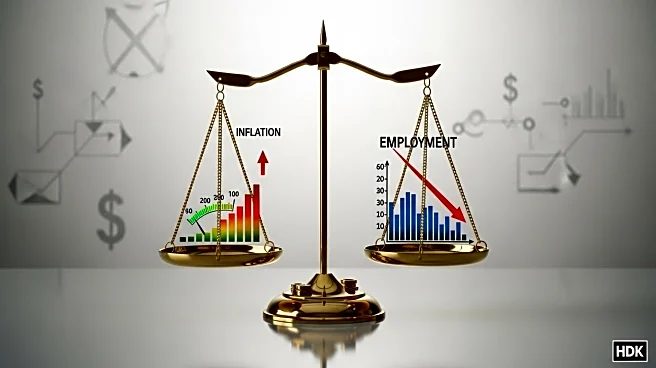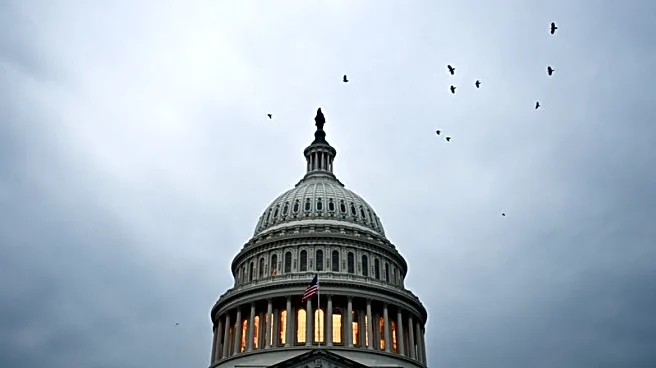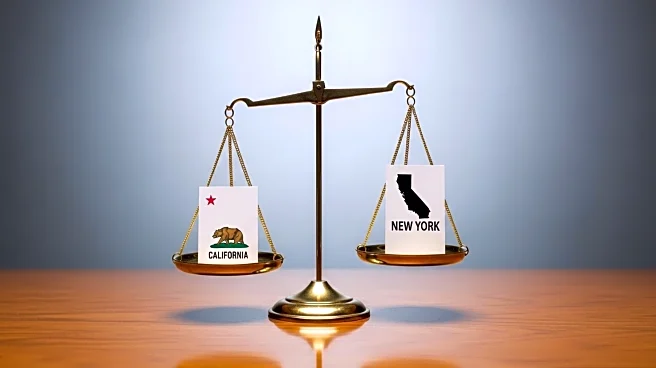What's Happening?
Consumer sentiment in the U.S. remains at its lowest level since May, driven by concerns over high prices and a weakening job market. The University of Michigan's survey indicates a slight dip in consumer
sentiment to 55 points in October, reflecting pessimism about personal finances and durable goods purchasing conditions. The Federal Reserve Bank of New York's survey corroborates these findings, showing increased consumer anxiety about inflation and job security. The Fed has responded by cutting interest rates, aiming to address weak hiring and rising unemployment rates, particularly among vulnerable groups.
Why It's Important?
The persistent low consumer sentiment highlights ongoing economic challenges, including inflation and job market instability. These factors could impact consumer spending and economic growth, as individuals may become more cautious with their finances. The Federal Reserve's interest rate cuts aim to stimulate the economy, but concerns about inflation and employment remain. Policymakers face a delicate balance in addressing these issues, as both inflation and employment risks are elevated. The situation underscores the complexity of navigating economic recovery amid fluctuating market conditions.
What's Next?
The Federal Reserve plans further interest rate reductions by the end of the year to support the economy. However, concerns about inflation and employment persist, with stricter immigration controls affecting labor supply. Fed officials acknowledge the challenges in achieving price stability and employment goals, emphasizing the need for careful monetary policy decisions. The upcoming months will be crucial in determining the effectiveness of these measures and their impact on consumer confidence and economic stability.












